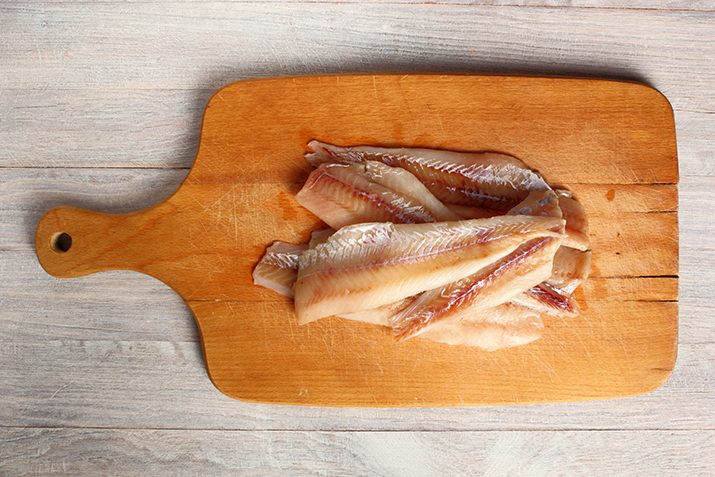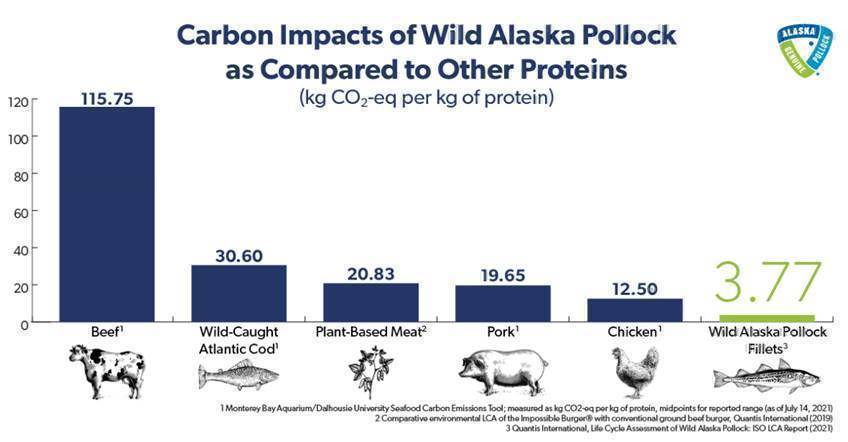Wild Alaska Pollock among most climate-friendly proteins in the world

The Association of Genuine Alaska Pollock Producers (GAPP) has proudly announced that Wild Alaska Pollock is one of the most climate-friendly proteins in the world, following the completion of a comprehensive Life Cycle Assessment (LCA).
Almost two years ago, GAPP began the LCA process in partnership with the sustainability consultancy Quantis, to prove what the association knew all along: that Wild Alaska Pollock was a climate-friendly protein choice. As part of the LCA process, Wild Alaska Pollock was analysed based on several key impact categories such as global warming potential, energy use, use of land and water resources and waste outputs.
The association is now pleased to share that a Wild Alaska Pollock fillet is 3.77 kg CO2-eq per kg of protein, significantly lower than comparative statistics reported for other protein sources.
- Wild Alaska Pollock: 3.771
- Chicken: 12.502
- Pork: 19.652
- Plant-Based meat: 20.833
- Wild-Caught Atlantic Cod: 30.602
- Beef: 115.752

“One of the things that we can all do to ensure a healthy planet for generations to come is to choose proteins that are solutions to climate change—and there’s nothing better for you and for our planet than Wild Alaska Pollock,” said Craig Morris, GAPP chief executive officer. “Seafood consumption in the United States is at an all-time high and Wild Alaska Pollock is the most consumed wild-caught whitefish thanks to its quality, affordability, versatility and nutrition. These LCA findings could not come at a better time, as our own research shows sustainable food options are increasingly important. Consumers can now be assured that their favorite fish is one of the most climate-friendly protein options available on earth.”
The Wild Alaska Pollock industry supports the work of the North Pacific Fishery Management Council and the National Oceanic and Atmospheric Administration (NOAA), which are responsible for ensuring the science-based stewardship of the nation’s ocean resources and habitat. Wild Alaska Pollock follows NOAA’s ecosystem-based standards for sustainable fishing, including efforts to reduce bycatch, making it the largest certified sustainable fishery in the world, and recognized globally for its responsible fishery management.
“For over 40 years, the Wild Alaska Pollock industry has worked tirelessly to bring this delicious and amazing protein from the remote and pristine waters of Alaska to family dinner tables around the world. And, we have been doing so in in a way that not only ensures the lasting sustainability of Wild Alaska Pollock; but also focuses on being environmentally responsible and ensuring that we have one of the lowest carbon footprints of all proteins. To accomplish this, the Wild Alaska Pollock industry has been laser focused on achieving efficiencies at every point in the supply chain, from boat to shore and ports around the world” said Bob Desautel, GAPP board member, chair of the GAPP Sustainability Committee and co-founder, president, and chief executive officer of Global Seas. “We rely on decades of experience and science, and we continue to challenge ourselves to look for efficiencies. With use of the newest technologies and innovations, we will continue to find ways to optimize our carbon footprint for years to come.”
As a carbon-friendly protein choice, Wild Alaska Pollock is a highly nutritious food that also helps meet the challenges of the present to protect the environment for future generations.
“Protecting the future of Wild Alaska Pollock and the environment is our priority,” said Morris. “These results show a promising future for Wild Alaska Pollock, and we are thrilled to see the success in the steps the industry has taken to embrace sustainable practices. My hope is these results will further cement our place in the hearts and minds of consumers.”
For additional information, visit: www.alaskapollock.org/ourfishery.
1Quantis International, Life Cycle Assessment of Wild Alaska Pollock: ISO LCA Report (2021)
2Monterey Bay Aquarium/Dalhousie University Seafood Carbon Emissions Tool; measured as kg CO2-eq per kg of protein based on midpoints for reported range (as of July 14, 2021)
3Comparative environmental LCA of the Impossible Burger® with conventional ground beef burger, Quantis International (2019)
Related content
Source: foodanddrinktechnology.com

